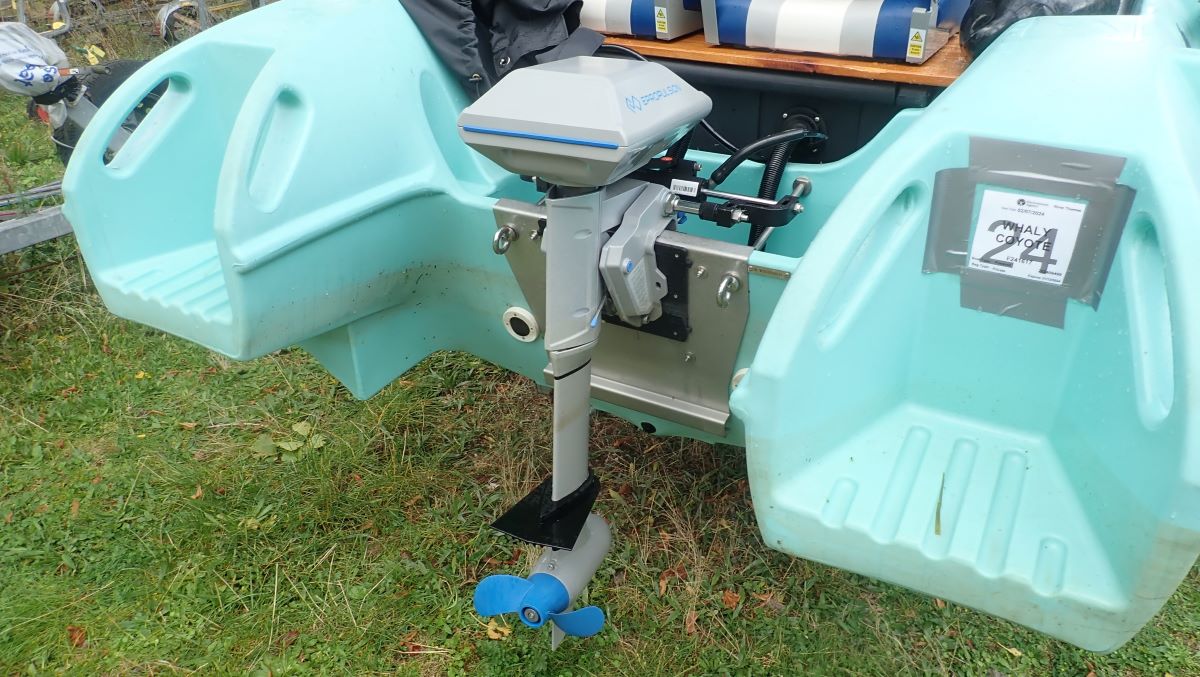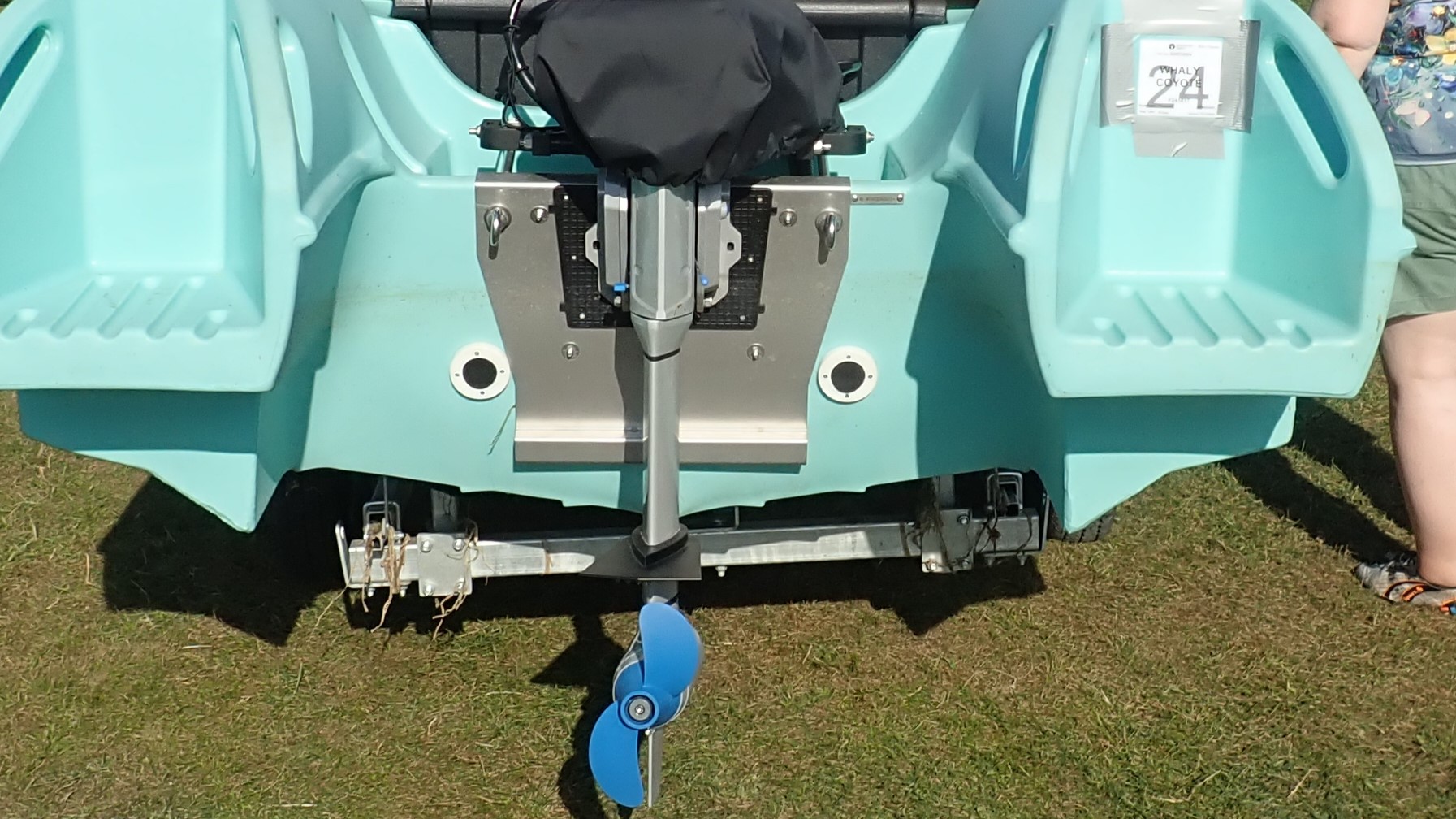Welcome back to Episode 2 of my powerboating adventure! If you’ve made it through the first episode without laughing too hard at my missteps, I commend you. Today, we’re diving into the wonderfully whirly world of propellers, balance, and how not to make your boat do the aquatic version of a wheelie. Spoiler alert: balance is key!
When I first signed up for the RYA Powerboat course, I thought the propeller’s job was pretty straightforward: spin around and make the boat go. Oh, how naive I was. Turns out, propellers are surprisingly complex little devices, and their placement, size, and direction all play a part in how your boat handles. Let me break it down:
Pitch and Diameter:
These aren’t just fancy words to confuse beginners. The pitch of a propeller is the distance it would move forward in one rotation if there were no water resistance, while the diameter refers to the size of the blade. Bigger isn’t always better—unless you want to turn your boat into a low-speed tugboat.
Cavitation:
Ah, cavitation—the bane of every beginner’s existence. This phenomenon occurs when the water around the propeller creates tiny bubbles, reducing the propeller’s efficiency. What causes it? Trying to go too fast, too soon. So, in the same way, you wouldn’t floor it in a car that’s stuck in mud, you don’t want to rev your engine too hard in shallow water. Lesson learned: be gentle with your throttle!
Now, before you start thinking of your propeller as some delicate flower that needs constant attention, just remember—properly trimmed and balanced, it’s your best friend on the water.
Propellers are essential for powerboats, converting engine power into thrust to move the boat through water. They vary in blade count, size, and shape, each of which affects performance, efficiency, and noise levels. Here’s a breakdown of how different types of propellers work and what to consider when choosing the right one.
Basic Structure and Function
Most propellers have between 2 and 6 blades. The blades are usually long and thin, with an airfoil shape when viewed in cross-section. Because the blades rotate, the tips move faster than the hub (centre), requiring them to be twisted to maintain efficiency across their length.
Types of Propellers and Their Uses
2-Blade Propellers
Best for: Smaller engines
Advantages: It is lightweight and highly efficient, producing minimal drag. A 2-blade folding propeller has the least water resistance, making it an economical choice that keeps fuel consumption low.
Performance: Produces two pressure pulses per rotation, which may cause more noticeable vibration than propellers with more blades.
3-Blade Propellers
Best for: General pleasure boating, including most powerboats
Advantages: A great balance of speed, fuel efficiency, and smooth performance, making it the most popular choice for recreational boats.
Performance: Produces three smaller pulses per rotation, resulting in less vibration and noise than a 2-blade propeller. It also performs well in rough conditions and strong currents, consistently maintaining speed.
4-Blade Propellers
Best for: Large sailing boats with engines over 150 horsepower
Advantages: Provides greater thrust and stability in choppy conditions, making it a good option for larger boats that need more power. However, it has higher drag and is less fuel-efficient than a 3-blade propeller.
Performance: The extra blade helps reduce vibration but increases drag, which can slightly reduce efficiency.
Additional Considerations When Choosing a Propeller
Vibration: More blades reduce vibration, creating a smoother and more comfortable ride, especially useful for larger boats with powerful engines.
Tip Speed: The longer the blade, the faster the tip rotates, which affects noise and vibration. A well-designed propeller balances blade length and pitch for smooth operation.
Noise: Propellers can create cabin noise if the blade wake strikes the hull or windshield. Generally, more blades help distribute the water pulses, resulting in quieter performance.
Choosing the Right Propeller Size
The larger the boat’s engine, the larger the propeller should be, as a bigger blade surface provides more thrust. Boats requiring strong performance, especially in rough waters, benefit from larger propellers, as they push more water and help maintain stability and speed.
Personal Preferences and Conditions
While performance metrics matter, your personal needs and typical boating conditions also influence the best choice:
For minimal drag: Opt for a 2-blade folding propeller. It creates less resistance in the water and is usually a more budget-friendly option.
For optimal performance in rough waters: A 3-blade folding propeller is more reliable, maintaining speed and reducing vibration.
As anyone who’s spent time on the water can tell you, boats are finicky creatures when it comes to balance. Unlike a car that sits nice and stable on four wheels, boats are always ready to roll, tip, or lean depending on how they’re loaded and how the crew moves.
This is especially true when it comes to planing—the stage where your boat starts to skim along the water instead of pushing through it. As exhilarating as this sounds (and feels), it’s not without its quirks.
Here’s a little confession:
I had a moment—let’s call it a “learning opportunity”—where I got the boat going a little faster than I was comfortable with. The Whaly was feeling frisky, and so was I. But then I forgot about balance. When the boat suddenly lifted its nose like a proud peacock, I realised I hadn’t quite mastered the art of trimming the motor. A slight adjustment to the tilt of the engine and the boat would’ve been as sleek as a gazelle; instead, it felt more like a wildebeest stumbling into the river.
Trim Your Motor for a Smoother Ride:
When your engine is too far down, the boat’s bow (front) will dig into the water like it’s ploughing a field. Raise it too much, and suddenly your boat’s on its back wheels, so to speak, losing control and skimming at dangerous angles. Finding the sweet spot is the key to balance.
Bow Down:
In certain conditions—like heavy winds—you might want the bow to stay lower to cut through the waves and keep you stable. That’s when trimming the motor down helps.
Bow Up:
If you want to get into a nice planing position, gently trim the motor up so the bow lifts just enough to reduce drag and give you that smooth, thrilling ride.
Pro tip:
Don’t forget to distribute weight evenly in the boat. Your crew’s positioning, gear stowage, and even where you stand can affect the boat’s balance and handling. You might feel like the king of the Thames, but you’re also the one responsible for keeping the boat level.
After my experience with the nose of the boat pointing skyward, I quickly learned that speed is both friend and foe in powerboating. The faster you go, the less time you have to react, especially in tight spots. And on the river, there are always tight spots. Remember that lovely Dory with its 20HP engine? It’s light and responsive—great for racing up and down the river, but also quite willing to turn sharply when you least expect it.
The Trouble With Speed:
When you’re going full tilt, any sudden movement of the steering wheel (or tiller) can send you careening off course. And while that might look cool in action films, it’s less than ideal when you’re trying to avoid a buoy or, worse, another boat.
To avoid this, the key is gradual movements. Think of yourself as a conductor, gently guiding the orchestra rather than a rock star smashing guitars on stage. Small, smooth adjustments to the steering wheel will keep you in control and help you avoid unintentional pirouettes on the water.
Before we wrap up, let’s take a moment to talk about the power of the boat. It’s easy to assume that doubling the horsepower will double the speed, but that’s not how it works with boats.
For instance, to move at 4 mph, you might need a 5 hp engine. But doubling that power to 10 hp doesn’t mean you’ll suddenly be zipping along at 8 mph. In fact, as you increase speed, the power needed rises exponentially. More and more horsepower is required just to gain a little more speed—it’s a case of diminishing returns.
That’s why many boats use two engines to overcome this power challenge. The increased thrust helps maintain higher speeds, but the cost and complexity of adding more horsepower mean it’s often not as straightforward as it sounds. It’s all about finding the right balance of power for the size and weight of your boat.
Now, let’s talk about docking. If you’re anything like me, you’ll have learned that trying to dock a powerboat at speed is like trying to parallel park with a herd of sheep watching. You’ll want to show off, but there’s a strong chance it’ll end in a mild disaster.
During my first few goes, I misjudged the distance to the dock. I approached a little too fast (OK, a lot too fast), threw the engine into reverse, and the boat shuddered as if it had just remembered how to breathe. The result was an almost comedic glide past the dock. Thankfully, the only casualty was my pride.
The Docking Formula: Slow + Steady = Success:
Docking is all about slow, controlled movements. Your throttle should be as gentle as a whisper as you approach, and the boat’s momentum should do most of the work. I learned quickly that boats don’t respond well to panic-fuelled bursts of reverse—easy does it every time.
And, as always, practice makes perfect. After a few (okay, many) attempts, I managed to sidle up to the dock like a seasoned pro… or at least not like a complete novice.
So, what have we learned today? Propellers are magical, balance is vital, and speed must be treated with caution and respect. Powerboating isn’t just about gunning the throttle and hoping for the best (though, in my early attempts, that might have been my strategy). It’s about control, finesse, and understanding the delicate relationship between water, wind, and engine power.
With each outing, I’m getting more comfortable behind the helm, and the lessons I’ve picked up along the way are starting to sink in—unlike the boat, which, thanks to a bit of balance and speed control, remains pleasantly afloat!
Stay tuned for Episode 3, where I’ll tackle the intricacies of launching, recovering, and avoiding embarrassing mishaps at the slipway. Until then, happy powerboating—may your propellers spin smoothly, your balance be perfect, and your speed always be just right.

